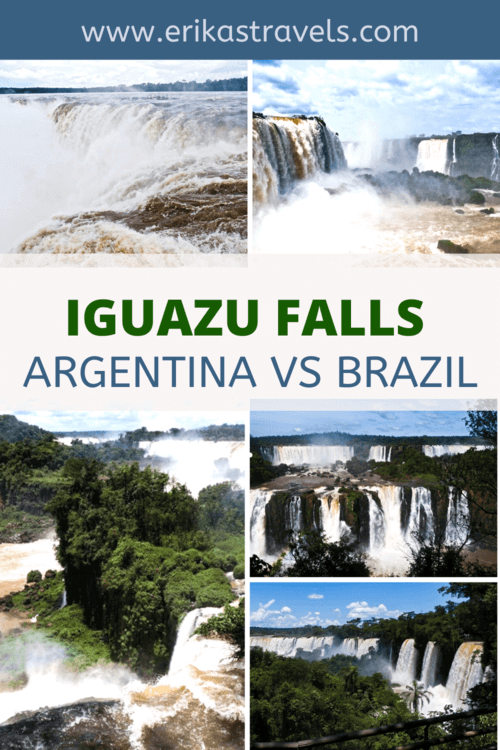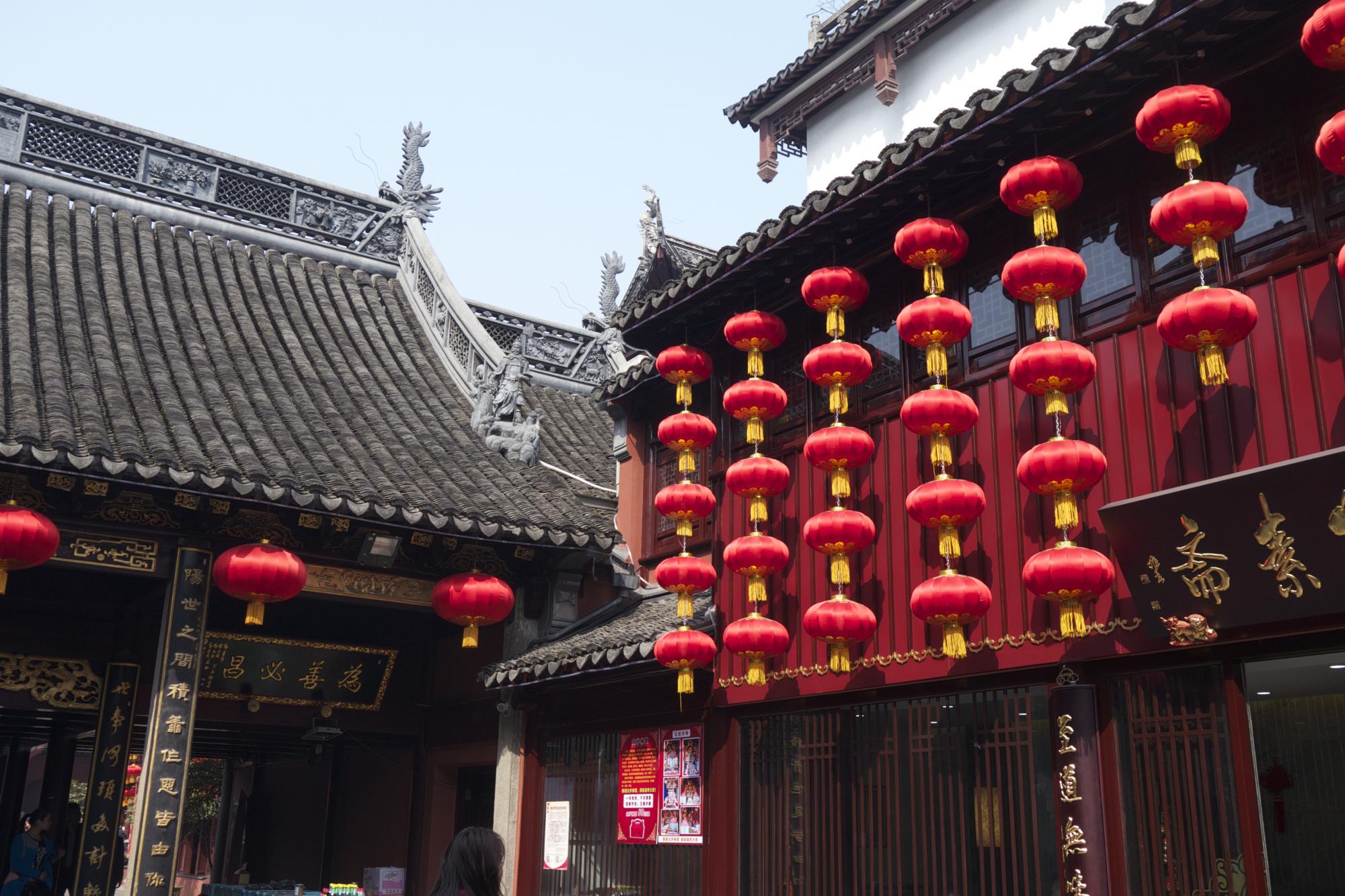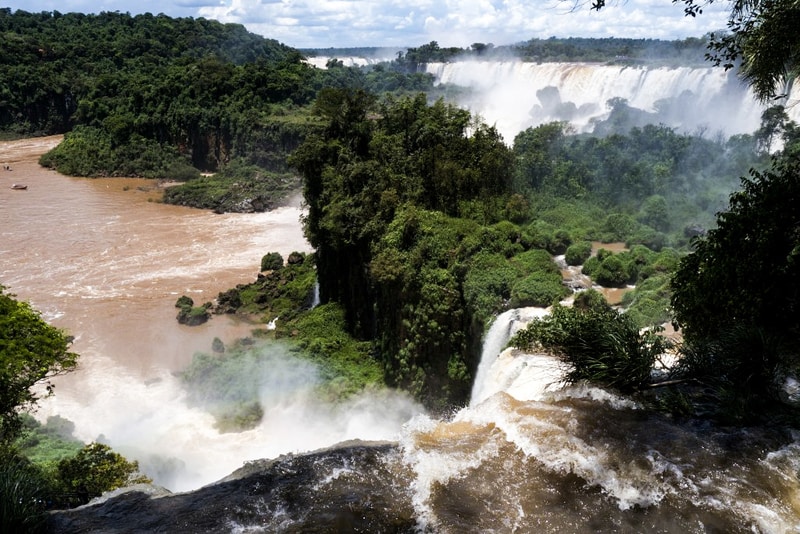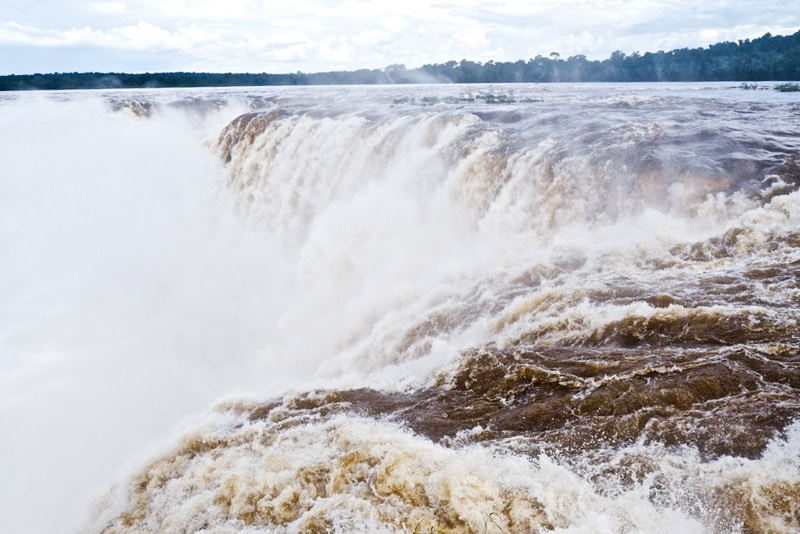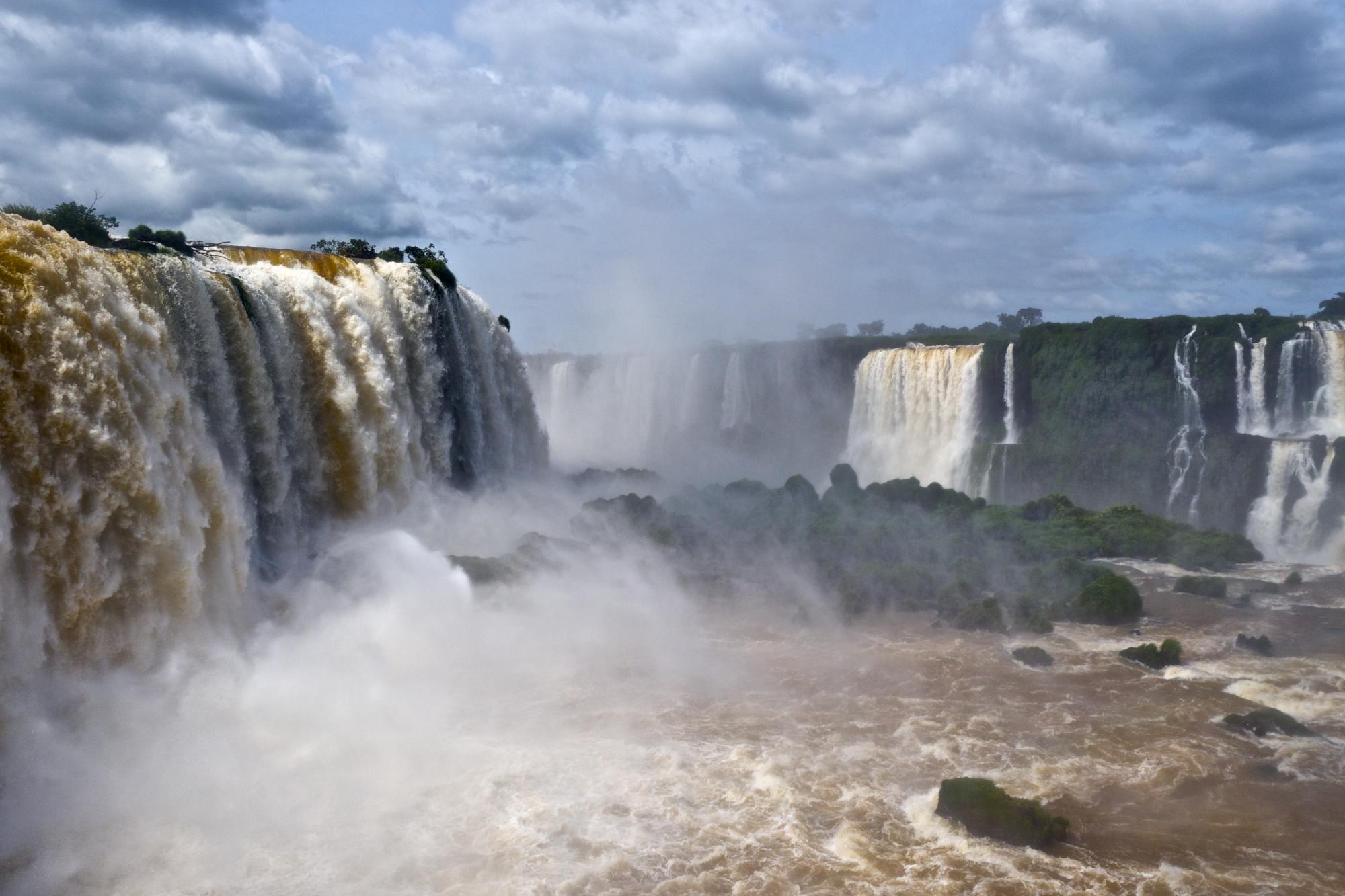
Visiting Iguazu Falls: Brazil and Argentina
Iguazu Falls is one of the planet’s most awe-inspiring natural wonders. Situated in the heart of a verdant rainforest and featuring hundreds of cascades, the falls are global treasure and one of the top places to visit in South America.
Visiting Iguazu Falls is a jaw-dropping visceral experience. It is a sensory overload—engaging, in equal measure, all five of the senses.
I traveled to Iguazu Falls as part of a backpacking trip to Patagonia and Buenos Aires. Visiting Iguazu Falls was never part of the original plan. I had originally hoped to take a day trip from Buenos Aires to Colonia del Sacramento. At the last minute though, realizing the ferry from Buenos Aires was full for the Carneval weekend, I decided to visit Iguazu Falls instead.
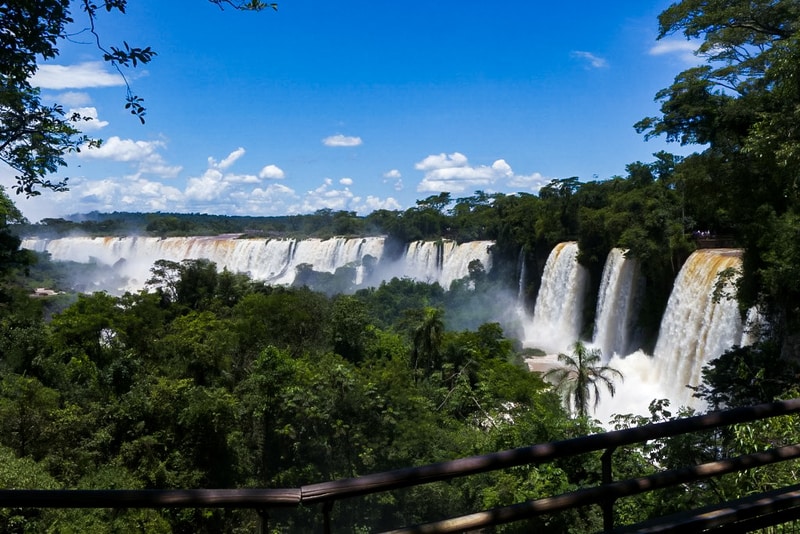
It was an excellent choice.
Iguazu Falls: Wonder of the Natural World
Iguazu Falls is the world’s second largest waterfall and one of South America‘s greatest natural wonders. Stretching 2.7km across dense jungle, Iguazu is actually a chain of hundreds of waterfalls–some dainty rivulets and some roaring cascades–that plunge into the murky waters of the Rio Paraná.
Like its African rival, Victoria Falls, Iguazu has wowed travelers, photographers and storytellers alike with its thunderous cascades and its lush jungle setting.
Iguazu Falls: Brazil Side vs Argentina Side
Iguazu Falls is a UNESCO World Heritage Site that lies between Brazil and Argentina. Due to high entry costs and visa fees, many travelers visiting Iguazu Falls choose to view the natural wonder from one side of the border or the other. The Brazil vs Argentina debate has become a heated topic of discussion among visitors to the falls and is the subject of countless blog posts and internet forums.
Yet, after choosing to see only the Zambian side of Victoria Falls and then later regretting my decision to skip its Zimbabwean counterpart, I promised myself I wouldn’t make the same mistake when visiting Iguazu Falls.
So I chose to spend two full days touring Iguazu, and dedicated one to each side of the park.
Iguazu Falls Argentina Side
I spent my first day at Iguazu Falls exploring the Argentine side of the Paraná River. The Argentine side is characterized by an extensive network of trails and boardwalks that take visitors above, below and in front of the waterfall. The trails and footpaths allow tourists to get up close to the curtain of water and to see both its thundering power and its delicate beauty from a variety of perspectives.
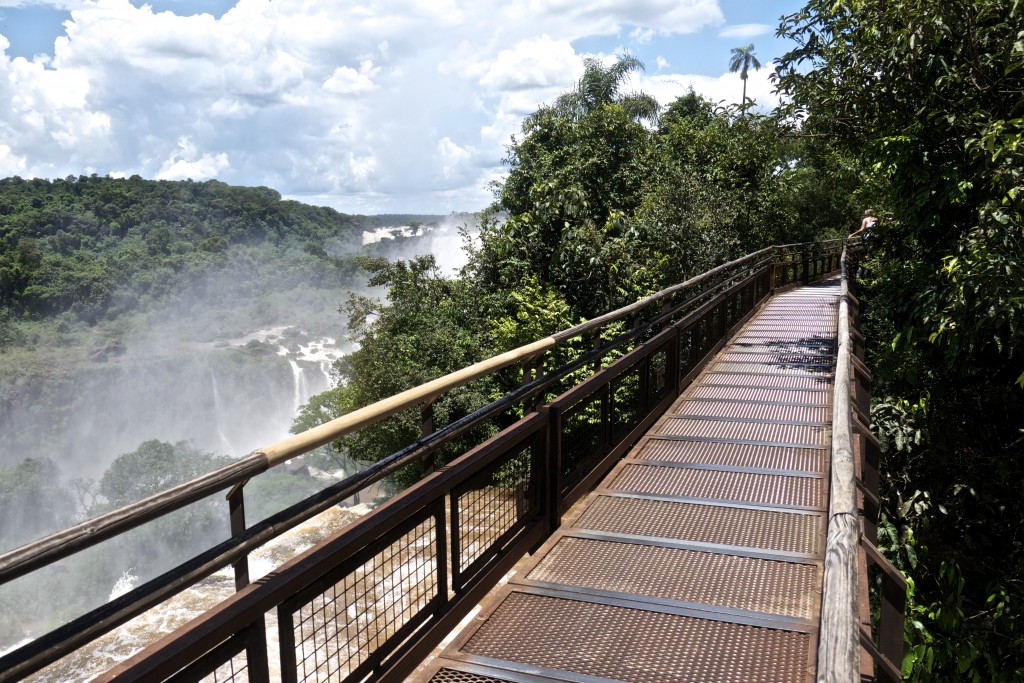
For much of the day, I meandered along the various trails, through dense forests teeming with beautiful birds, butterflies and woodland creatures. The park’s lush, tropical forest is a haven for more than 2,000 plant species, 400 types of birds, 80 types of mammals and countless insect and reptile species. As I explored the various corners of the park, colorful birds flew overhead, swarms of butterflies darted amongst the trees and aggressive coatis scavenged for food.
Visiting the Argentine side of the park took the entire day–partly because the network of trails was so extensive and and partly because the holiday weekend crowds clogged the park’s pathways and caused traffic jams at the viewpoints.
Due to high water levels during my visit, trails around Isla San Martin were closed and blocked off. Yet, between the upper trail, the lower trail and Devil’s Throat, there was plenty to see to keep me entertained for the day.
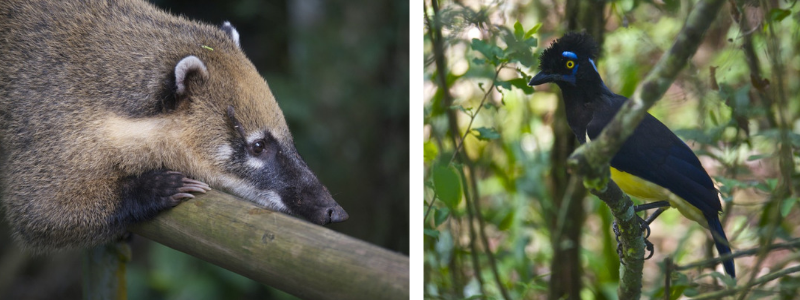
Devil’s Throat is the tallest waterfall in the park, as well as its grandest. The thundering sheet of water drops more than 80 meters over cliffs, crashing into the murky, chocolate-colored waters of the Rio Paraná with a deafening roar.
To reach Devil’s Throat, most visitors take the complementary park train to a boardwalk and then continue for one kilometer along the wooden planks to the lip of the waterfall. Since lines at the train stations were so long when I visited, I chose instead to walk on the path alongside the tracks. The sweltering heat, along with the lack of shade on the trail, ensured that I was exhausted when I reached the boardwalk.
Yet, as I walked along the wooden platforms and neared Devil’s Throat, showers of mist provided me with the relief I needed from the relentless sun of the tropics. The sprays of water drenched my sweaty body from head to toe, soaking me to the core and wiping away the rivulets of sweat that had formed down my back and neck.
By the time I left Devil’s Throat and headed toward the park’s exit, I felt refreshed, reenergized and rejuvenated by the power of the falls.
Iguazu Falls Brazil Side
The next morning, I took the bus from Puerto Iguazu, across the border, to the Brazilian side of the park. My possession of an Italian passport allowed me to cross the border painlessly and without the hassle of obtaining a visa. Within an hour, I had made it door to door, from my hostel to the park’s entrance.
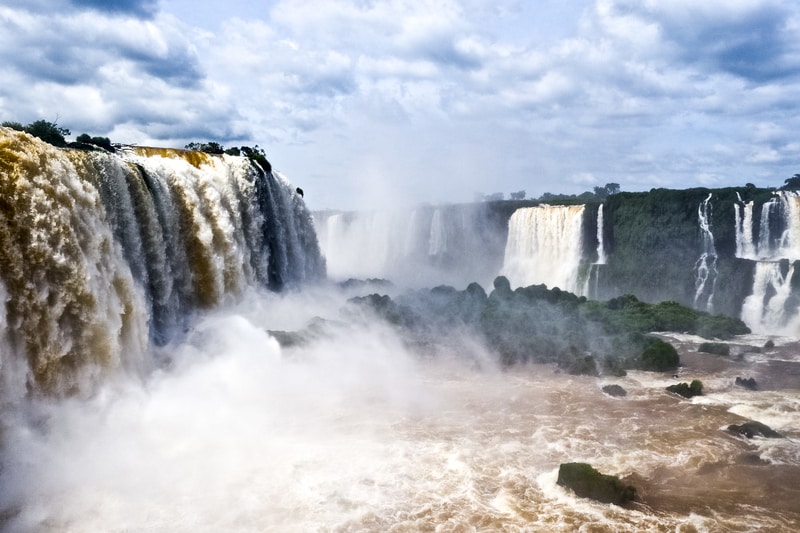
A common sentiment among travelers is that, while Argentina has the falls, Brazil has the views. And I found this assertion to be mostly true. Argentina contains nearly 80 percent of the waterfall, in addition the miles upon miles of trails and boardwalks that allow visitors to explore the cascades from every angle imaginable.
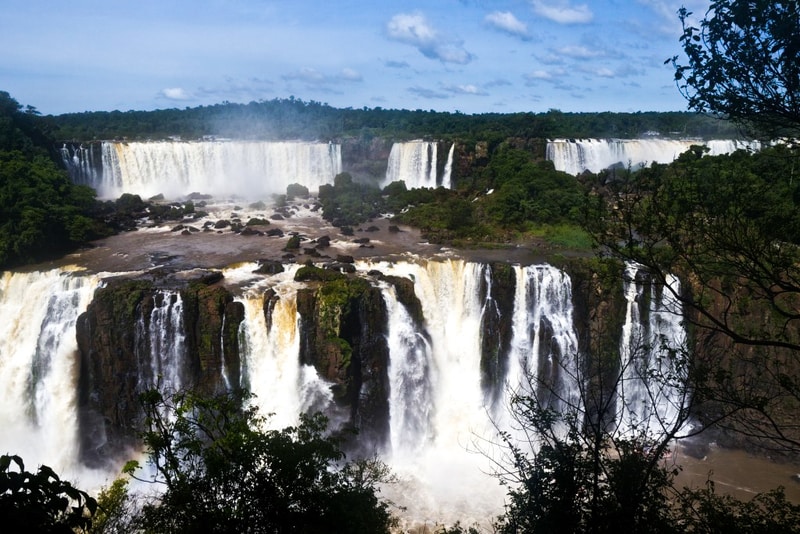
But the panoramas from Brazil—though fewer—are unobstructed and virtually unparalleled.
The short trails on the Brazilian side of the falls afforded me picture perfect postcard-views of the 275 waterfalls that tumble over mist-shrouded pillows of green forest.
***
Visitors convinced that a waterfall is a waterfall is a waterfall, will likely be blown away by the sheer volume of water that pours over the cliffs of Iguazu Falls. They will be awestruck by the gushing streams of water–some gentle trickles, some thunderous cascades–that, together, offer not only a visual experience, but also an auditory and sensory one.
I spent about two hours walking along the boardwalks, admiring the thundering water, snapping pictures of my surroundings and letting my senses be overwhelmed by the fury of the falls.
As with my visit to Victoria Falls, clouds of soaring mist painted the landscape in a hazy grey hue and muted the colors in my photographs. Thus, the pictures I took of the natural wonder do no justice to Iguazu’s scale and magnificence.
As I stepped into the spray of the waterfall and let myself be enveloped by its mist-raining glory, I couldn’t help but wonder why I’d ever questioned visiting Iguazu Falls before returning home. And I couldn’t help but feel an overwhelming sense of happiness that I listened to my travel-obsessed heart, heeded Dan’s advice and continued my South American adventure for one final and epic hurrah.
__________________________________
Like this Post on Visiting Iguazu Falls? Pin It!
